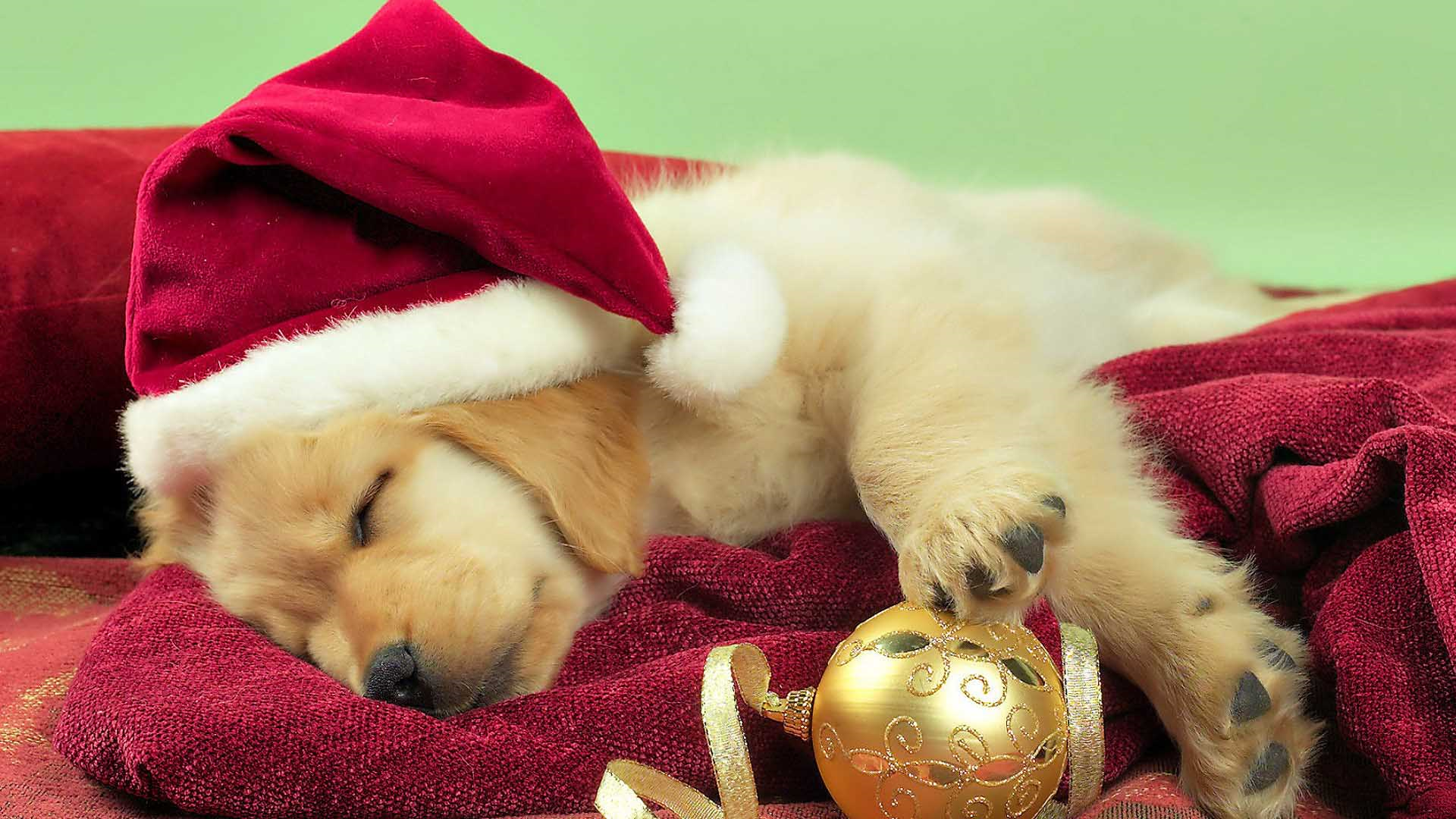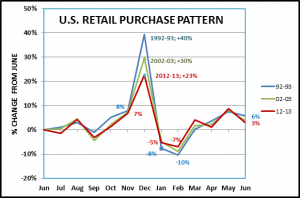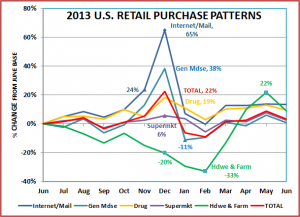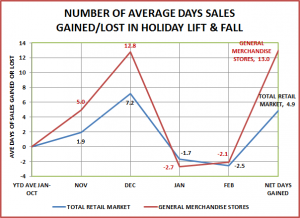The Holiday Lift – I’m dreaming of a “green” Christmas!
Many consumer Product categories have strong seasonality. The pet industry is no exception. Of course, consumers buy pet food and supplies all year round. However, many segments, like Collars and leads experience a big boost at retail in the Spring as people and their Pets spend more time outdoors. By the same token, the Fall chill brings the promise of Winter’s inevitable cold, so apparel and “indoor” product sales begin to climb.
In terms of retail “lifts” attributed to a particular date, Halloween has become the U.S.’s second biggest retail holiday. The Pet Industry has jumped on board with hundreds of millions of dollars in pet costume and toy sales.
However, nothing can hold a candle to Christmas. The lift associated with Christmas has been a long tradition in America. It is a season for gift giving and the increased retail “traffic” in the stores generally gives a boost to most categories – people products or pet products.
For many years, the Holiday shopping season officially kicked off on “Black Friday” – the day after Thanksgiving. That has changed. With Christmas items already out in many stores for over a month and Black Friday sales now starting on Thanksgiving day or earlier, the “push” for the consumer’s dollars gets more frantic every year.
How much of a gain in retail sales actually happens during the holidays and has the ever increasing hype boosted the overall “lift” in retail sales. The US Census Bureau historically tracks retail sales by month. Let’s use it.
- We’ll use June as the starting point and graph monthly sales for the following 12 months.
- Each monthly waypoint will be the cumulative % change from our starting month
- We’ll pick 3 years to compare 1992-93; 2002-03; 2012-13. This spans 20 years…..
OBSERVATIONS
- The first thing that you notice is the remarkable similarity of pattern. Remember these measuring points span 20 years in 10 year increments.
- The next thing is that the December lift is becoming much smaller
- 25% less in 2002 than in 1992
- 23.3% less in 2012 than in 2002
- 42.5% less than it was 20 years ago
- The “lift” in November over the years is basically unchanged…. 7-8%
- In January, sales fall off a cliff…and reach about the same “bottom” every year.
- No matter how bad January is, February can go even lower.
So the lift is unchanged in November as people delay purchasing, waiting for the kick off sales. The December lift is about ½ of what it once was but the Jan-Feb trough is just as deep as ever. It doesn’t seem like the hype is helping. There is one other small factor to consider – profit. You may recall from the earlier posts on Pet CPI that the prices on Pet Supplies and Food drop precipitously in December. It appears that the big lift comes with a price tag…profit margin.
Regarding holiday lifts, not all retail channels are created equal. Let’s take a look at the 2013-14 season from the viewpoint of several large retail channels.
OBSERVATIONS
- The internet has the biggest lift in this group. Clothing Stores (not pictured) is the only other retail segment with a higher lift – 68%. The internet is by far the fastest growing retail segment. Amazon’s sales grew 25+% in 2013.
- General Merchandise stores, with a 38% lift are probably the closest to the pattern of Pet Stores. Notice the big drop in January. However, unlike the overall market, sales move up…slightly in February. Gift stores (not pictured) also show a 40% peak in December.
- Supermarkets have the smallest lift due to the everyday nature of their business.
- Drug stores actually have a pretty good lift…19%, as they now stock an ever widening array of “non-medical” consumer products, including pet supplies. December is also in the cold and flu season, which could be a factor.
- Hardware and Farm Stores – Although they may get a lift from holiday product sales, Christmas is not a lift season for their overall business. As you can see, Spring is the major lift for this channel.
- Put them all together. Nationwide for 2013-14, we got a lift of 22% for December. This is less than the 23% lift in the prior year. The November 2013 lift at 5% was also lower than 2012’s lift of 7%.
Percentages are one way to look at the situation. Let’s try looking at it with a slightly different “spin”.
- Let’s assume the holiday lift & fall runs from November through February.
- We’ll use the prior 10 months from January through October as a base for determining an average month’s business leading into the “season”.
- We can then use this to determine how many extra days of sales are generated by the lift or…lost in the fall.
- Here’s what it looks like for the Total Market and specifically for Gen Mdse stores.
- In the Total Market, we gain 9.1 extra days of sales (Nov+Dec) but…lose 4.2 days after the first of the year. The net gain is about 5 days of average business. It’s a 120 day period so we get an extra 4.2%.
- In the Gen Mdse store channel, the November lift of 5 days equals the Jan-Feb fall so the 13 days gained in December are all plus business. It’s about ½ of an average month’s business, a 10% gain spread over 4 months.
In terms of actual $ spent,
- In November & December of 2013, we spent $663B. This is
- $383B more than in 1992; +136%; Ave annualized growth rate of 4.2%
- Now to put this in the perspective of “Scrooge” , the buying power of the $ in 2013 was only 60.8% of 1992
- Adjusted actual growth was $123B; +43.8%; Ave annualized growth rate of 1.7%
Christmas holiday retail spending is still growing. However, despite all the publicity and work, the “traditional” retail holiday “lift” seems to be getting relatively smaller and perhaps less profitable. We have no choice but to keep it up. The competitive pressure is just too strong. However, maybe we should consider expending some time and effort to try to bring January and/or February out of their “traditional” trough…pad the “fall” with some extra dollars.
Later this month, we’ll do a CPI update. Will Pet Food and Supplies pricing continue to rise…?






